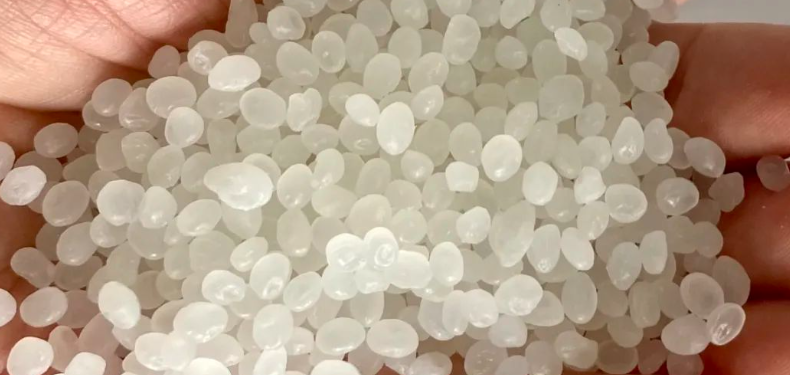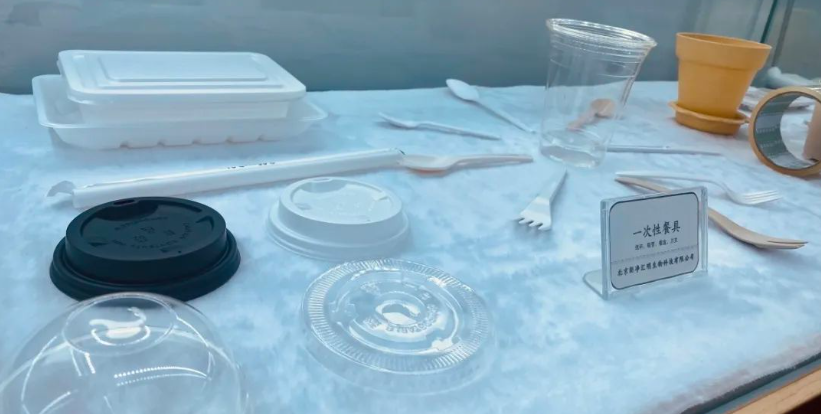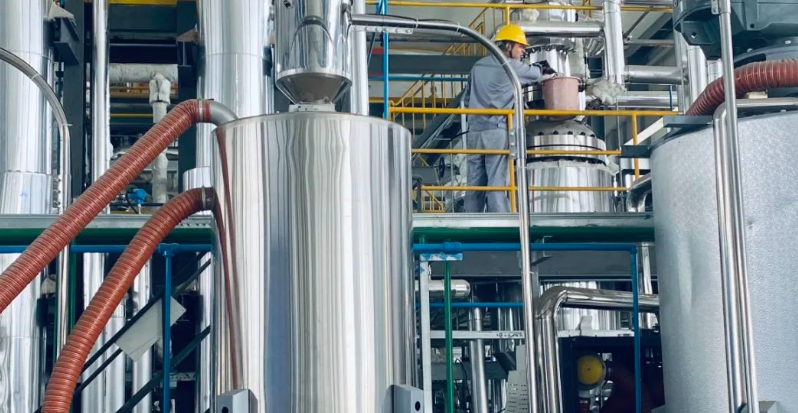Green and low-carbon transformation has become a global consensus.
On the eve of the National Day, the reporter came to Shandong Langjing New Material Technology Co., Ltd. (referred to as Shandong Langjing in the article) to visit the 1,000-ton polylactic acid project. Just on September 19, Shandong Langjing’s 1,000-ton polylactic acid production line was successfully commissioned and produced qualified products, becoming the first in the province. This marks that the polylactic acid industrial scale-up project of Langjing’s independent technology has been fully completed in Zibo, which has far-reaching significance for global green and low-carbon production enterprises.
What is polylactic acid? Polylactic acid (PLA) is a new biodegradable material. Starch raw materials can be extracted from regenerated corn stalks and other plant resources, fermented into lactic acid, and then converted into polylactic acid through polymer synthesis, shaped like particles. Rice grains. From lactic acid to polylactic acid, although there is a word difference, the development in China has been slow due to an important link that was technically “stuck”. This link is lactide. Langjing people have been working for 8 years, overcoming the technical difficulties of lactide, and achieving a technological breakthrough in the entire polylactic acid industry chain in 2020.

“After testing by international authoritative buyers, the quality of the polylactic acid we produce has reached or even exceeded the international advanced level.” Chen Qingwen, chairman of Shandong Langjing, told reporters. At present, there are only two companies in the country that have achieved large-scale production of 10,000 tons of polylactic acid, and only one of them uses independent research and development technology. Internationally, there are only two large-scale manufacturers of polylactic acid. However, with the development of the biomanufacturing industry, the demand for polylactic acid is rising year by year.
Why does the market favor new polylactic acid materials? Because polylactic acid has good biodegradability and can be completely degraded by microorganisms in nature, producing carbon dioxide and water, it is recognized as an environmentally friendly and widely used new biological material.

Chen Qingwen introduced that with the policy requirements of “carbon peaking and carbon neutrality” at home and abroad, “carbon reduction” has become a hard target for many companies. For example, a Fortune 500 apparel company requires suppliers throughout the industry chain to reduce carbon emissions by at least 30% a year. How to achieve this goal? In the clothing fiber manufacturing process, adding polylactic acid can help companies achieve carbon reduction goals, and can make fabrics smoother, more comfortable, naturally antibacterial and antibacterial; for example, APPLE has promised to achieve carbon neutrality in the entire industry chain by 2030… These demand directions of enterprises are a major opportunity for polylactic acid to usher in a “blowout”.
Polylactic acid, a new material full of potential, has an annual demand of millions of tons in the disposable plastics market alone. In addition to environmental protection and carbon reduction, polylactic acid has a wide range of application scenarios. For example, in the medical field, high-performance polylactic acid materials can be used to make orthopedic materials and implanted into patients. Due to their good biocompatibility, the human body will not produce rejection reactions; in agriculture, polylactic acid materials are added After completing its mission, lactic acid agricultural mulch film will degrade into nutrients needed by plants and return to nature. Polylactic acid can also be used in various fields such as engineering plastics, automotive and aviation plastics, and 3D printing.
In January 2020, my country’s “plastic ban order” was officially issued. On May 16, 2023, the National Development and Reform Commission once again asked local governments to continue to implement plastic restrictions and bans. Provinces and cities have successively introduced policies, and postal express and major airlines have also It has been announced one after another that express bags, disposable tableware, etc. will be replaced by PLA products. The era of large-scale application of polylactic acid has arrived.
Langjing, which is at the forefront of domestic polylactic acid independent research and development technology, has gone through hundreds of experiments from laboratories to small test lines to 1,000-ton demonstration lines in order to achieve reliable industrial amplification, and has a deep understanding of material characteristics. Nine core technologies of the unique polylactic acid production process. In November 2021, Langjing introduced the industrial investor Xinpu Chemical, a Singapore-owned enterprise, to assist in the scale-up construction of the project. In April this year, the construction of the new device was completed and entered the equipment commissioning stage.

“Equipment debugging is like playing a game. You upgrade one level after another. Every problem solved brings a result. In the process, we also harvested another new bio-based material – polylactic acid polyol. .” Luo Xin, deputy general manager of Langjing, said that the company uses products with different indicators in the production process to produce polylactic acid polyols, which can be used in bio-based shoe materials, coatings, adhesives, elastomer materials and other fields, further broadening the scope of polylactic acid polyols. Application areas of esters. Lactide, polylactic acid, polylactic acid polyol, polylactic acid polyurethane, polylactic acid functional fiber, colored in-situ polylactic acid… Langjing has filed nearly 30 patent inventions and obtained 21 authorizations, laying the groundwork for more Chinese companies. The high-end application market has made good technical reserves.
As the first company in Shandong to achieve industrialized production of polylactic acid, Langjing’s 1,000-ton polylactic acid production line was successfully commissioned, laying a solid foundation for the development of the polylactic acid industry chain in Zibo. At present, many domestic and foreign companies have extended an “olive branch” to Langjing. In October, the company will start production at full capacity to complete the supply.
Looking forward to the future, we will set a small goal in five years and a big goal in ten years to move towards a tens of billions industry chain. Chen Qingwen said: “Ten thousand tons of polylactic acid has been included in the plan and is expected to be put into construction next year. By then, Langjing will usher in a new round of broad development. We look forward to working with more peers and upstream and downstream enterprises to promote China’s green and low-carbon The development of the new materials industry creates green value for more customers and contributes to Zibo’s economic development.”



 微信扫一扫打赏
微信扫一扫打赏
